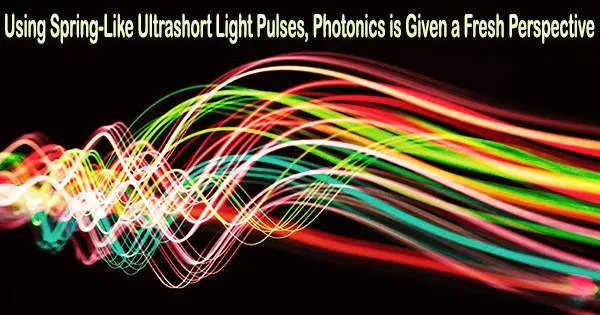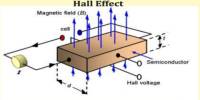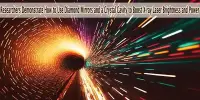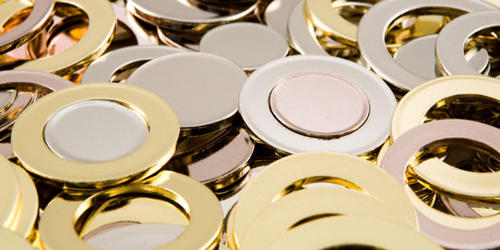Ultrashort light pulses actually refer to optical pulses that have extremely short durations, typically on the order of femtoseconds (10^-15 seconds) or picoseconds (10^-12 seconds). In particular, the studies of ultrafast processes and nonlinear optics have been transformed by these pulses, which are produced by advanced laser systems.
We’ve all played at least once with a spring toy, but did you know that light can be shaped like a spring too?
An international team of researchers, led by Marco Piccardo, a former researcher at the Italian Institute of Technology (IIT) and now a Professor in the Physics Department of Técnico Lisboa and Principal Investigator at the Engineering Institute for Microsystems and Nanotechnologies (INESC MN), has harnessed ultrafast optics and structured light to synthesize in the laboratory a new family of spatiotemporal light beams, known as light springs.
Collaboration between IIT, Politecnico di Milano, and Técnico Lisboa was used to conduct the research. The discovery has the potential to revolutionize photonics with complex light applications such as free-space (for example, in the atmosphere) optical communications, laser-plasma acceleration, and time-resolved microscopy (useful, for example, to produce movies depicting the motion of molecules and viruses).
Ultrashort light pulses have found applications in numerous fields. These pulses provide a way to “freeze” ultrafast processes and observe their details with unprecedented temporal resolution.
This is a very challenging goal but the nanophotonic fabrication capabilities of INESC MN in Lisbon and the excellent plasma research groups of Técnico represent an ideal ecosystem to pursue this ambitious research. Combining these advanced space-time beams with intense nonlinear laser-matter interactions could have important fundamental and technological implications.
Marco Piccardo
The research is published in Nature Photonics.
By using a method called pulse shaping, which is used in ultrafast optics, it is possible to lengthen or reduce the duration of extremely short light pulses down to a few femtoseconds, or thousandths of billionths of a second, or even construct complex pulses. A central idea to this principle is that short laser pulses are composed of a large range of colors.
A pulse is broken down into its component colors by scientists, who then work on each color separately and combine them to create a new shape for the laser pulse. Although wavefront shaping is a different set of techniques than pulse shaping, it also enables the creation of a spatial structure for light.
Light designers have mastered the art of combining these two techniques to simultaneously manipulate light in space and time, fusing structured light with ultrafast optics to create totally new spatiotemporal applications.
A paradigm shift in spatiotemporal light shaping
Piccardo and his colleagues have presented a paradigm change in spatiotemporal light shaping, as they have now reported in Nature Photonics. Instead of using traditional shapers, which divide colors along a vibrant strip, the researchers now used a unique kind of circularly symmetric diffraction grating to produce a rainbow of hues.
Everyone can conduct this experiment at home: a round rainbow will be obtained by shining a flashlight on an old CD-ROM and capturing a photo with the phone camera.
You are now halfway through the experiment if you swap out the flashlight with an ultra-short laser pulse and the CD-ROM for a microstructured diffractive device created in a cleanroom for nanofabrication. The experiment’s second step involves creating several optical vortices that have the shape of a corkscrew using high-tech holograms.
“This results in a novel family of spatiotemporal light beams, which evolve on an ultrashort femtosecond timescale with a twisted and widely tailorable light structure,” said Marco Piccardo. “It opens unprecedented design capabilities in photonics, with many spectral and structural components to address.”
The scientists overcame the difficulties posed by the broadband nature of these new light beams for characterizing them by creating a potent reconstruction method termed hyperspectral holography, which provides a thorough tomography of the intricate space-time structures.
“Our technique, which combines holography with Fourier transform spectroscopy, enables full characterization of the spatiotemporal profile of complex beams, enabling radically novel applications in the study of light-matter interactions,” said Giulio Cerullo, a Professor in Politecnico di Milano and co-author of the study.
The group customized a number of the light springs’ features to demonstrate the remarkable control made possible by its space-time shaper. Two of these springs are shown dancing together in space and time in a stunning performance.
“We have found extremely interesting physics using these beams, which could lead us to a whole new generation of compact accelerators and light sources in plasma. This technique is very exciting because it promises to bring these theoretical concepts to the laboratory and to trigger major advance in laser-plasma physics,” said Jorge Vieira, a Professor in Técnico Lisboa and co-author of the study.
The next logical step will be to incorporate these light springs into laser-plasma studies now that they can be completely freely synthesized in the lab.
“This is a very challenging goal but the nanophotonic fabrication capabilities of INESC MN in Lisbon and the excellent plasma research groups of Técnico represent an ideal ecosystem to pursue this ambitious research,” said Piccardo. “Combining these advanced space-time beams with intense nonlinear laser-matter interactions could have important fundamental and technological implications.”
















